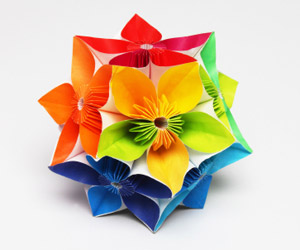
Color counts. It affects humans in numerous ways, spanning from mood to motor skills. For example, the color red can increase heart rate and blood pressure. Surprisingly it can also increase the amount of electrical activity in the brain as well as one’s eye-blink rate.
When it comes to web design, color is a substantial feature. However, not all web designers are aware of the psychological and physiological effects of color. Color is often an afterthought, applied in a random fashion with no regard for its potential effects on the user. This also means that little consideration is made as to how color can be used to enhance the user experience. This is an opportunity that should not be overlooked.
Below are descriptions of the psychological and physiological effects of colors often used in web design:
- Red – The traditional hue of red elicits extremes on both side of the emotional spectrum; it can evoke passionate love or intense anger. It can also increase restlessness and tension. Therefore it is best to use modified versions of red, such as pink, maroon, or rose.
- Orange – Highly saturated oranges can come across as intrusive, and even invasive. Experts agree that it is best to use oranges with lower levels of saturation because they create an energetic, lively, and jovial mood. The use of orange is believed to be particularly effective in the food service industry.
- Yellow – Yellow is consistently considered a cheerful color. Unlike orange, saturation levels have very little effect on its cheerful expression. In regards to physiology, yellow has been found to speed metabolism. It requires intense focus of the eye, making it an excellent color to use to catch the user’s attention.
- Green – Green is associated with life, health, and nature. It has a calming effect with the ability to increase concentration and enhance meditative states. While red increases tension and restlessness, green has a calming effect that reduces muscle tension.
- Blue – Blue is a safeguard color – not many people dislike blue. It represents calmness, security, and trust. Most importantly, it is a universally appreciated color, regardless of culture.
- White, Black, & Grey – These three commonly used colors are both psychologically and physiologically neutral. They do have symbolic meaning, however. White symbolizes purity and cleanliness. Black has negative connotations while grey is simply passive.
The most important thing to understand about color is that it is culturally defined and personality dependent. For example, white means purity in certain parts of the world but it symbolizes funerals in others. Also, red may be appreciated for its invigorating effects by an extroverted person, but avoided for these very same effects by someone who is introverted.
When it comes to color and corporate website design, it is important to keep two things in mind:
- Know the target audience. By knowing the demographics and even personality characteristics of the target audience, one can tailor the website palette to cater to their color preferences.
- The goal is to keep physiological and psychological arousal to a minimum. So it may be wise to use neutral colors in the website design.
Remember, color can improve a website just as easily as it can detract. When used correctly, color is a powerful and easy tool to enhance user experience, thus enhancing consumer trust.
References:
For physiological effects of the color red
http://www.jjtok.io/3m10p/wp-content/uploads/2010/09/Effect-of-Color-on-Store-Design.pdf
For psychological and physiological effects of color
http://www.amazon.com/Color-Human-Response-Aspects-Reactions/dp/0471288640



Your two sources are from the mid 1980’s, how can you attempt to make claims and generalize from wildly outdated research?
Hi NeilJ
Thanks for taking the time to comment. You’re quite right: these sources aren’t recent, though I think the points they make are still useful. I try my best to acknowledge the original researchers who developed the ideas behind each topic that I write about, as I firmly believe in academic integrity. Many times this entails citing work written quite a ways back. I am sure there is much more recent work, and I’d be very interested to read it.